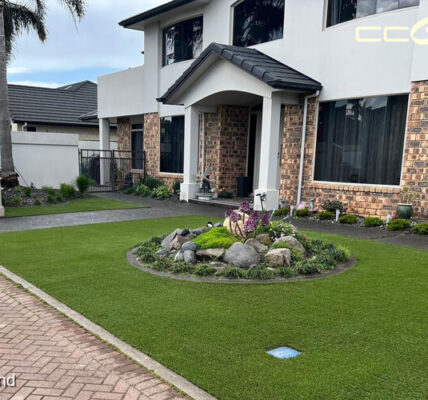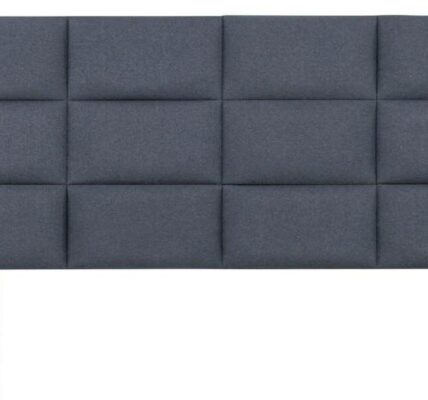The kitchen: the heart of the home, a culinary canvas, and a place where countless memories are made. But amidst the joy of cooking and laughter, lies the constant battle against wear and tear. Choosing the right flooring for this multi-functional space is crucial. It needs to be durable enough to withstand daily traffic, spills, and dropped utensils, yet stylish enough to complement your design vision.
We’ll delve into the reasons why vinyl reigns supreme, compare it to other popular options, and equip you with the knowledge to create a beautiful and functional kitchen floor that lasts.
1.1. Durability: A Kitchen Must-Have:
The kitchen is a high-traffic zone. Frequent foot traffic dropped objects, and appliance movement demands a floor that can withstand everyday wear and tear. Here’s what to consider:
- Scratch Resistance: From scraping chairs to dropped utensils, your kitchen floor needs to resist scratches and maintain its pristine look.
- Impact Resistance: Heavy pots and pans can dent or crack some flooring materials. Choose a floor that absorbs impact without sustaining damage.
- Moisture Resistance: Spills, splashes, and cleaning routines expose your kitchen floor to moisture. Opt for a water-resistant or waterproof option to prevent warping and damage.
1.2. Easy Maintenance: Keeping Your Kitchen Sparkling Clean:
Kitchens are prone to spills and splatters. A low-maintenance floor is essential for keeping the space clean and hygienic. This includes:
- Ease of Cleaning: The surface should be easy to sweep, mop, and clean without requiring harsh chemicals.
- Stain Resistance: Spills need to be cleaned promptly, but ideally, the floor shouldn’t readily stain.
- Low Allergen Potential: Some materials like carpets can trap allergens and dust. Choose a flooring option that promotes a healthy environment.
1.3. Comfort Underfoot: Creating a Functional Space:
Kitchens are where we spend a significant amount of time, often standing for long periods. Here’s what to consider for comfort:
- Softness: A comfortable surface can lessen fatigue on your feet and legs, especially during long cooking sessions.
- Warmth: Cold hard surfaces can feel unpleasant underfoot, especially in colder climates. Consider a material that retains warmth.
- Slip Resistance: Spills can create a slippery surface. Choose a floor with good slip resistance for safety.
1.4. Style and Design: Reflecting Your Kitchen’s Personality:
Your kitchen floor plays a significant role in setting the overall tone and ambience. Look for flooring that compliments your existing style:
- Variety of Options: Choose from a vast array of colours, patterns, and textures to match your kitchen’s aesthetic, whether it’s modern, rustic, or traditional.
- Seamless Integration: The flooring material should complement other design elements like cabinets and countertops.
- Timeless Appeal: Opt for a style that won’t go out of fashion quickly. Classic choices like wood-look vinyl offer enduring appeal.
Vinyl Flooring – The Champion Rises:
Now that we’ve established the essential qualities for a perfect kitchen floor, let’s explore why vinyl flooring stands out as a champion contender:
2.1. Unbeatable Durability:
- Scratch and Impact Resistance: High-quality vinyl flooring features a durable wear layer that resists scratches, dents, and dings remarkably well.
- Water Resistance and Waterproof Options: Vinyl is naturally resistant to moisture. Many vinyl floors are even waterproof, making them ideal for spill-prone areas.
2.2. Easy Maintenance Keeps Your Kitchen Sparkling
- Effortless Cleaning: Vinyl’s smooth surface allows for easy sweeping, mopping, and spot cleaning with mild cleaning solutions.
- Stain Resistance: High-quality vinyl resists stains from spills and splatters, making it easy to maintain a clean and hygienic kitchen.
- Hypoallergenic: Vinyl doesn’t trap dust or allergens, promoting a healthier environment, especially for allergy sufferers.
2.3. Comfort and Safety for Everyday Use
- Comfortable Underfoot: Vinyl offers a softer and warmer surface compared to some hard flooring options, reducing fatigue during long periods of standing.
- Good Slip Resistance: Many vinyl options come with textured surfaces that provide good slip resistance, especially when wet.
- pen_spark
2.4. Style Meets Functionality: A Design Powerhouse
- Vinyl comes in a stunning array of colours, patterns, and textures, allowing you to mimic the look of natural materials like wood or stone at a fraction of the cost.
- Achieve a modern and sleek look with wood-look vinyl planks in a light or grey tone.
- Create a touch of timeless elegance with vinyl tiles that replicate the beauty of marble or granite.
- Explore patterned vinyl for a unique and personalized touch, adding a pop of colour or a vintage charm to your kitchen.
2.5. Budget-Friendly Choice for Lasting Value
Vinyl flooring offers exceptional value for the price. Compared to other popular options like hardwood or natural stone, vinyl provides a durable, stylish, and low-maintenance floor at a significantly lower cost. This makes it an attractive option for homeowners looking for a balance between functionality and affordability.
Choosing the Perfect Vinyl Floor for Your Kitchen:
With its impressive list of benefits, vinyl flooring might be the perfect choice for your kitchen. Here’s how to select the right vinyl floor for your space:
4.1. Understanding Vinyl Floor Types:
- Luxury Vinyl Tile (LVT): These tiles mimic the look and texture of natural materials like wood or stone. They are durable, water-resistant, and come in a wide variety of styles.
- Luxury Vinyl Plank (LVP): Similar to LVT but comes in elongated planks, perfect for replicating the look of hardwood floors. LVP offers ease of installation and a seamless, contemporary look.
- Sheet Vinyl: A traditional and affordable option that comes in large rolls. It’s waterproof but might not offer the same design variety as LVT or LVP.
4.2. Selecting the Right Features:
- Consider your traffic flow: Choose LVT or LVP with a thicker wear layer (12 mils or higher) for high-traffic areas.
- Think about water exposure: Opt for waterproof vinyl for areas around sinks and dishwashers.
- Prioritize comfort and aesthetics: Textured vinyl offers a more realistic look and feel, while a smooth finish can make the space feel brighter.
4.3. Design Inspiration for a Stunning Kitchen
- Classic Wood Look: Achieve a timeless and warm feel with wood-look LVT in a light or grey tone. Pair it with white cabinets and stainless steel appliances for a modern kitchen.
- Modern Stone Look: Create a sleek and sophisticated kitchen with stone-look vinyl tiles that mimic the look of granite or slate. This option complements dark cabinetry and chrome fixtures beautifully.
- Patterned Pizzazz: Add a touch of personality with patterned vinyl flooring. Consider geometric patterns, herringbone layouts, or vintage-inspired floral designs for a unique focal point.
Installation and Care: Ensuring Your Vinyl Floor Thrives:
5.1. Installation Options:
- DIY Installation: LVT and LVP with click-lock systems are ideal for DIY projects for handy homeowners.
- Professional Installation: For uneven subfloors, complex layouts, or extensive square footage, consider hiring a professional installer. They can ensure a flawless installation and handle any unforeseen issues.
5.2. Installation Tips for a Flawless Finish:
- Plan Your Layout: Before starting, sketch out a layout plan to minimize waste and ensure a seamless installation.
- Acclimatize the Vinyl: Allow the vinyl flooring to adjust to the room temperature for 24-48 hours before installation.
- Start from a Corner: Begin installation from a corner furthest from the door and work your way inwards.
- Tap and Lock: Secure the planks together using the click-lock system. Tap them gently with a mallet to ensure a tight fit.
- Cut Carefully: Use a sharp utility knife and a straightedge to make precise cuts around corners or fitting around pipes.
- Use Transition Strips: Install transition strips at doorways or where the vinyl flooring meets another flooring type.
- Caulk the Edges: Apply a thin bead of caulk along the perimeter of the floor and around plumbing fixtures to create a watertight seal.
5.3. Caring for Your Vinyl Kitchen Floor – A Recipe for Longevity
Vinyl flooring is renowned for its low-maintenance nature. However, following these simple cleaning and care tips will ensure your floor looks its best for years to come:
- Regular Sweeping and Mopping: Sweep or vacuum your vinyl floor regularly to remove loose dirt and debris. Use a damp mop with a mild cleaning solution specifically designed for vinyl floors. Avoid harsh chemicals or abrasive cleaners that can damage the surface.
- Dealing with Spills: Clean up spills promptly to prevent stains. Most spills can be wiped up with a damp cloth. For tougher messes, use a vinyl floor cleaner as directed by the manufacturer.
- Preventing Scratches: Use furniture protectors like felt pads under chair legs and appliance feet to minimize scratches. Consider placing mats in high-traffic areas like entryways to trap dirt and debris before they reach the vinyl.
With its impressive blend of durability, style, ease of maintenance, and affordability, vinyl flooring stands out as a champion contender for kitchens. It offers a practical solution for busy households, allowing you to create a beautiful and functional space that endures the daily wear and tear of kitchen life.
Whether you’re drawn to the timeless elegance of wood-look vinyl or the sleek sophistication of stone-look tiles, vinyl flooring presents a vast array of design possibilities to match your unique kitchen aesthetic.









